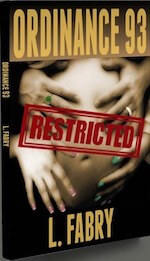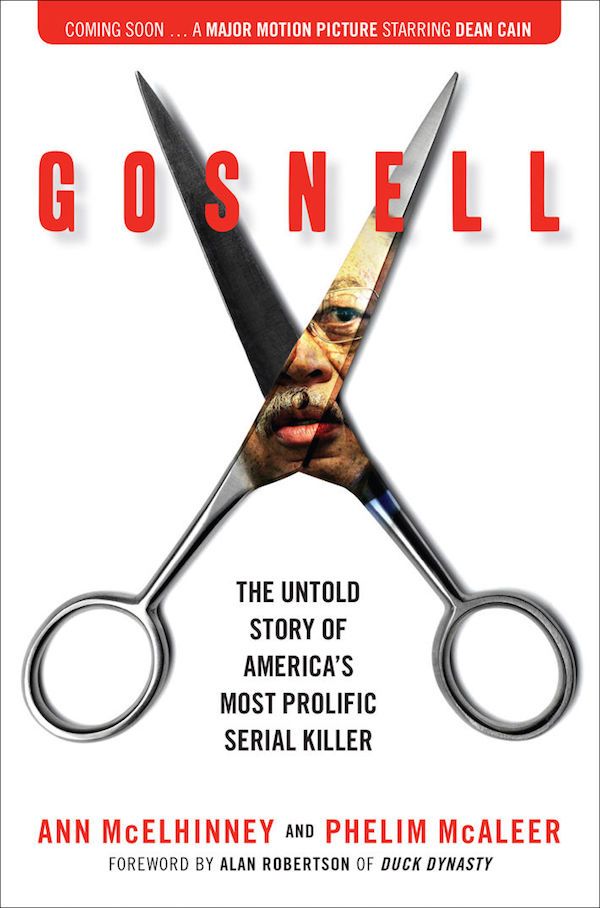Top 6 Most Shocking Reveals in the Gosnell Book
Author Ann McElhinney admits on the first page that she did not trust or like pro-life activists. Yet, the following story will chillingly tell how she herself became submerged in a world where the performers of abortion reached such depths, it was impossible to ignore. At least, impossible for her and her husband, Frack Nation’s Phelim McAleer. Gosnell: The Untold Story of America’s Most Prolific Serial Killer has already sparked controversy by not reaching the NYT Best Seller list even though it instantly sold out at Amazon and Barnes & Noble, despite very few media giving the book reviews or any kind of press. Think politics isn’t involved? Then read on to see just the first bit of the most shocking reveals in the book.
1. It would eventually emerge that Gosnell was, in fact, one of the biggest suppliers (of illegal prescriptions) in the entire state of Pennsylvania (pg 8)
You read that right. Gosnell was not investigated for running an abortion mill, conducting abortions well past the allowable legal date or in horrific manners not allowed by law, or even the mysterious and negligent death of patient Karnamaya Monga (no police report on her death was ever filed, although it was later found she paid $830 for her own death). He was only ever investigated for running a “pill mill.”

2. Gosnell was allowed to perform an abortion in the middle of a police raid (pg 23)
On the night the police and other authorities – including the DEA, FBI, and Department of Health – one woman was waiting for abortion. She was among the many patients who were at the clinic the evening who were in various stages of pre and post abortion. Even in a building that was described as covered in dust, dirt, and cat urine, even with a suction machine that was used for both vaginal and anal suction (obviously against medical protocol), the patient insisted on continuing with her abortion. The authorities allowed it. As the book noted, the health department will shut down a restaurant on the spot for less.
3. “I couldn’t sleep once we started piecing everything together” (pg 45)
Christine Wechsler was an assistant district attorney working the Gosnell case and in great detail saw the horrors conducted at the clinic. Just barely off maternity leave, she described an inability to sleep or eat as she got further involved. As the case progressed, it was described as “a heavy burden, and getting heavier (pg 45).” She would become pregnant with her next child during the investigation and still forced herself to sift through the testimony, images, and even post-mortem examinations of fetuses. These were to determine if the 47 bodies found at the clinic had been killed inside or outside the womb by seeing if their brains had been removed. Wechsler was forced to cut the bodies herself on insistence from the medical examiner. This action would prove that each baby had been born before he or she was killed. She later shared she threw away any clothes she wore to the clinic because she wanted no further reminders.
4. “There’s evil in that place” (pg 64)
Even after the clinic was shutdown and given the drug paraphernalia and other contents that might be of interest, Ann McElhinney and investigators were surprised that no one ever broke into claim the contents. In a city where people break into occupied buildings to steal wires from inside the wall, no one wanted to enter the abandoned building where its prizes where lying about for the taking. As the investigators stood outside looking for signs of a break in, a passerby mentioned there was evil in the place, and many others described a morbid feeling when entering or even walking by the clinic.
5. Gosnell’s clinic should have been closed decades before Karnamaya Monga’s death (pg 65)
The grand jury reported an extreme need to know why the clinic was allowed to be in operation after so many obvious health and safety violations. It was in severe violation of many state, county, and federal regulations, in addition to not being eligible to perform abortions at all under the Pennsylvania Abortion Control Act. About 40 years prior to his arrest, Gosnell attempted to complete the mandatory OB/GYN qualifications for abortionists, but never did. An inspection was scheduled in 1986, seven years after the clinic began performing abortions, but no records could be found that it even took place. Many violations were found leading up to the investigation, but at no time was the clinic shut down or even fined for clear violations, such as:
– not having an OB/GYN on staff
– blood, urine, and feces littered floors, furniture, and even walls
– no registered nurses on staff as the law requires
– no counseling or discussion of other non-abortive options
– no infectious waste plan
– lack of liability insurance
– expired and improperly stored vaccines in a dirty fridge, which would later suspend Gosnell from participating in a vaccine program. He would later try to reenroll.
– blank answers on inspection forms regarding anesthesia and post-operative care
– no handicapped access. It took paramedics 47 minutes to remove the dying Monga from the building
– written reports stating deficiencies had been corrected even though no follow up visit was made to confirm
– 17 years without a health inspection
As the book states, “about the only value of the inspections had was to bump up the DOH staffers’ mileage reimbursements.”
6. Gosnell left a baby’s arm and leg inside a mother (pg 70)
When Marie Smith visited the clinic in 1999 for an abortion on a five month old fetus, she was treated in the same sorry and illegal fashion as other patients. But she never recovered as Dr. Gosnell said she would. After vomiting and being bed ridden for days, the doctor refused to see her. The patient was forced to go to the emergency room where those doctors found the issue: Gosnell had not fully removed the fetus. Marie contracted a severe infection as a result and was lucky enough to live. She only received a $5,000 settlement, which her lawyer stole. Her only consolation was using the ultrasound of her baby’s arm and leg in her uterus against Gosnell in the later case.
In a similar circumstance where Gosnell could not remove the entire fetus, he gave what he had removed of the fetus to the family in a jar. It is no wonder that after a lack of consequences for all his unlawful actions, that “Gosnell must have felt invincible (pg 80).”
7. “People Die” (pg 84)
These were the words of Christine Dutton, the Department of Health’s chief counsel when confronted in court about if it was necessary to conduct an investigation into a patient’s death at the clinic. Even the grand jury was visibly stunned when hearing her use those words. They ultimately realized if not for the negligence of the DOH, no one would have had to die at the Gosnell clinic.
And that’s just in the first 90 pages. My apologies if anything has been incorrectly cited. It is my fault, not that of the author. To read for yourself, get the book here.
Part Two coming soon…
 Lilia Fabry is the author of Ordinance 93, a novel set in a world where having a baby without permission is against the law and the first four people to break it. She also writes about everything from reaction injection molding to low fat recipes while indulging her need for creative outlets including novels and screenplays. Find out more on Twitter.
Lilia Fabry is the author of Ordinance 93, a novel set in a world where having a baby without permission is against the law and the first four people to break it. She also writes about everything from reaction injection molding to low fat recipes while indulging her need for creative outlets including novels and screenplays. Find out more on Twitter.
